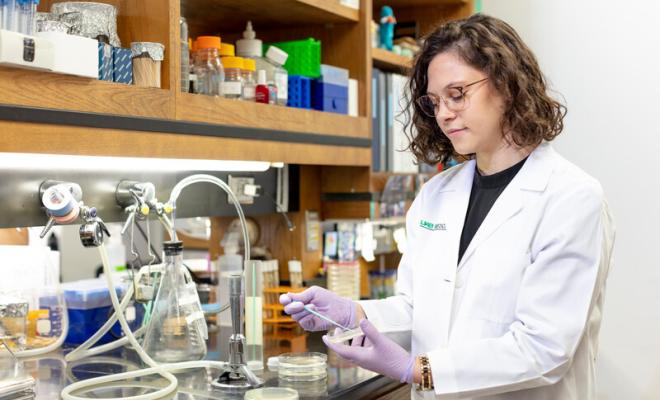There are almost 20 different
- B. cenocepacia
- B. multivorans
- B. vietnamiensis
- B. dolosa
- B. cepacia
- Although not a member of B. cepacia complex, B. gladioli is another Burkholderia species that can be found in the lungs of people with CF.
Burkholderia
Basic infection prevention and control practices reduce the risk of getting or spreading B. cepacia. These bacteria pose very little medical risk to healthy people. However, some people who have a serious illness, such as
B. Cepacia and CF
How B. cepacia complex species affect people with CF varies. Researchers do not yet know why some people with CF are more likely to get B. cepacia than others.
In many people with CF, infection with B. cepacia may not worsen lung disease. In up to one-third of people infected with B. cepacia, the rate of
Among the different species of B. cepacia complex, some may be more harmful than others (e.g., B. cenocepacia and B. dolosa). The Cystic Fibrosis Foundation is working with researchers to learn more about the B. cepacia complex and help identify new treatments.
How it Spreads
It is not always known how people with CF become infected with B. cepacia complex. Research has shown that people with CF can get B. cepacia from others who are infected with these bacteria. The germs spread either by direct contact, such as kissing, or indirectly from touching objects with the germs, such as doorknobs. This is known as cross-infection and can happen in social settings like events, gatherings or meetings.
In some cases, shared infection was not found in the lungs of a person with CF until two years after being exposed to someone else who was infected with the germ.
For many people with CF, infection with B. cepacia complex cannot be traced back to exposure to another infected person. In these cases, infection may have occurred by exposure to Burkholderia in the natural environment.
Diagnosing B. Cepacia
When a doctor or nurse gets a throat or
Research on B. Cepacia
The CF Foundation is supporting research on B. cepacia complex to find new ways to prevent or get rid of lung infections caused by these bacteria in people with CF. Some researchers are studying whole new classes of antibiotics to fight B. cepacia complex bacteria.
In addition, basic scientific research is underway to describe the differences between the B. cepacia complex species. The CF Foundation supports the B. cepacia Research Laboratory and Repository at the University of Michigan, Ann Arbor. The laboratory is a resource to the CF medical community to help researchers identify B. cepacia complex species, investigate their spread and store samples for future research studies.
The laboratory also enables scientists to learn more about how B. cepacia causes infection and to help find new treatments for people with CF. Care centers can send sputum cultures to the lab to confirm and identify the specific species of B. cepacia complex.
